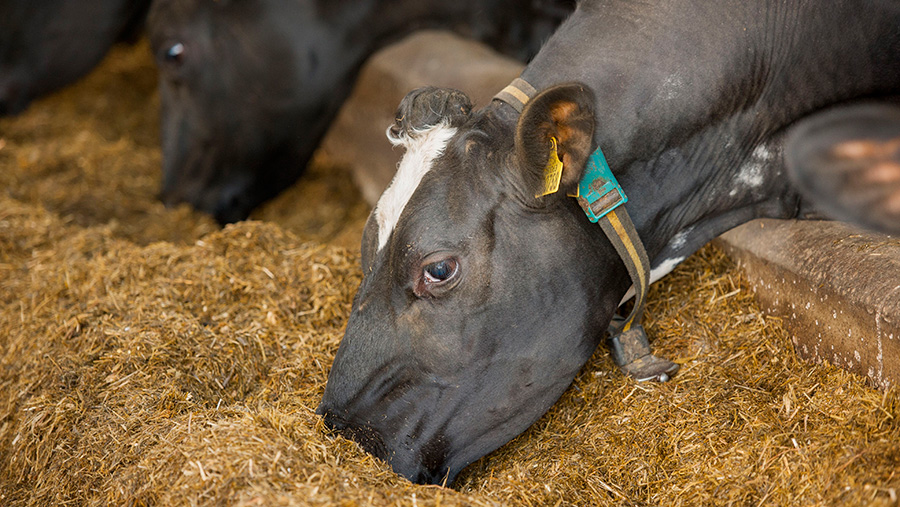Livestock Event 2016: Trouw launches silage energy calculation
 © FLPA/John Eveson/REX/Shutterstock
© FLPA/John Eveson/REX/Shutterstock A new way of measuring energy levels in silage could change how dairy farms look at ration balancing this winter, according to the company that came up with it.
Animal nutrition firm Trouw claims its measurement, called dynamic energy (DyNE), it is a more accurate alternative to metabolisable energy (ME).
Launching DyNE at this year’s Livestock Event, Trouw Nutrition ruminant specialist Tom Goatman said the measurement showed the total amount of net energy available for the dairy cow in milk production.
See also: Guide to taking and analysing silage samples
It is gauged by analysing the nutrients formed when broken and absorbed in the digestive passage.
By specifically measuring volatile fatty acids, fatty acids, glucose and amino acids, a better estimation of energy can be calculated, Mr Goatman explained.
This is a subtle difference when compared to ME, which is a measurement of the gross input of energy before digestion, he added.
Mr Goatman said because DyNE accounts for how the silage is used inside the cow, it is a better yardstick than ME, which “doesn’t tell the whole picture”.
Using this year’s analysis as an example, he said, on average, first cuts would drop in ME (by 0.2MJ/kg DM) but actually increase in DyNE (by 0.3MJ/kg DM).
“The clamps analysed averaged 10.8MJ/kg DM this year, compared with 11MJ in 2015, which on the year could mean a potential reduction in milk yield of 0.3 litres a day.
“However, in DyNE terms, these same first cuts may actually perform better than basic numbers first indicate, supporting the production of one extra litre of milk,” explained Mr Goatman.
